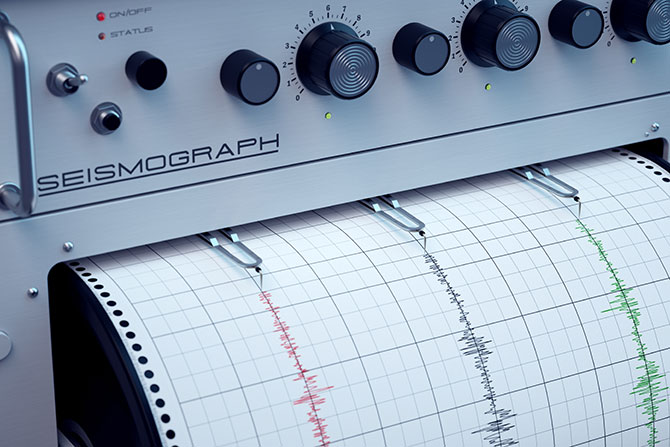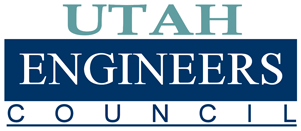The 2020 Magna Earthquake was a friendly reminder of the seismic setting that we live in. Earthquakes can cause damage in various ways, from the ground shaking triggered by a fault rupture to the ground movement initiated by the buildup of pore pressures in subsurface soils. Whatever the movement, it’s important for structural and geotechnical engineers to work together to properly evaluate the potential seismic hazards that each site may pose. That includes evaluating the potential of liquefaction and lateral spread in subsurface soils. As we know, liquefaction is the phenomenon that occurs in loose sands, silts and clays, but does it occur in all silts and are clays susceptible to it? This article discusses the current state of screening of liquefaction susceptibility of fine-grained soils.
The Chinese Criteria was one of the first screening methods to evaluate soils’ liquefaction potential. The Chinese Criteria was a Chinese building code enforced design procedure that required soil to meet the following conditions before it could be considered susceptible to liquefaction.
- The clay content (particles smaller than #200 sieve) is <15% by weight
- The liquid limit is 35%
- The natural moisture content is >0.9 times the liquid limit
Since the Chinese Criteria was adopted, several large earthquake events (Kocaeli in 1999, Chi-Chi in 1999, Adaparazi in 1999 and Christchurch in 2011) have resulted in liquefaction and seismic induced movement. Our community of engineers dispatched researchers to observe and record the movement. This data has been added to the growing database of sites that experienced ground movement due to liquefaction. Just as important, the data noted sites where liquefaction was expected but did not occur. After the community reviewed the new data, it became apparent that the Chinese Criteria was not accurately predicting which sites did and did not liquefy. It became necessary to update it, particularly regarding fine-grained soils.
In 2001, Youd prepared a monumental paper that discussed several screening methodologies that had used the new data to refine and replace the Chinese Criteria. Since that paper, several other methodologies have been prepared using new and refined data. One of the more often referenced methodologies was outlined in Bray and Sancio’s 2006 paper on the Assessment of Liquefaction Susceptibility of Fine-Grained Soils (Bray and Sancio, 2006). The authors used case history data from measured historical earthquake events to establish screening criteria for evaluating whether soils are susceptible to liquefaction. They concluded that soils with a water-content-to-liquid-limit ratio of 85% or greater and a plasticity index less than 12 were susceptible to liquefaction. The paper found soils to be moderately susceptible to liquefaction when their plasticity index ranged between 12 and 18 and the water content to liquid limit ratio was 80% or greater. Where one could imagine soils with a plasticity index greater than 18 are no longer liquefiable, the authors strategically state that “structures founded on these soils, and for that matter, any soils, may undergo significant deformation if cyclic loads approach or exceed the dynamic strength of the soil.” (Bray and Sancio, 2006)
Although not as widely accepted as the findings from the NCEER workshop, the Soil Liquefaction During Earthquakes monograph (Idriss and Boulanger, 2008) offers additional screening criteria for use in liquefaction analyses. The monograph takes the screening interpretation a step further by characterizing the liquefaction of the soils to behave in a sand-like or clay-like behavior. As pointed out by the previous methodologies, the screening often occurs within “dirty” sands and low plastic fine-grained soils. Idriss and Boulanger summarized that soils began to behave clay-like once their plasticity indices were between 4 and 9, intermediate (clay-like and sand-like) with a plasticity index between 4 and 5 and sand-like when the plasticity index of the soil is less than 3.5.
In one of the last industrywide accepted consensus papers, Brigham Young University’s Leslie Youd and many others (Youd et al., 2001) concluded that soils once classified as too “clayey” for liquefaction to trigger may instead suffer softening and strength loss during earthquake shaking. If your site sits on soil that behaves in a clay-like manner, you may be asking whether you are free from a seismically induced ground settlement. Like many geotechnical phenomena, it depends. Although the site may be too clayey for liquefaction to occur, settlement may still happen, but it will be at a much smaller magnitude than sand-like behavior.
As illustrated in the screening methods above, the hazard of liquefaction and its potential effects on the environment can most accurately be characterized using studies incorporating more recent earthquake events and the liquefaction behavior associated with each. Unfortunately, there isn’t a “one size fits all” methodology. Your geotechnical engineer can help step you through the hazards and guide you on the potential ground movement your site may experience. These screening methods offer a fresh look at the susceptibility of soils to liquefaction and related behavior (such as settlement and cyclic softening).
Taylor Hall, P.E., is a Geotechnical Engineer and the Owner and Principal of the Moab Geotechnical Group. He has a bachelor’s degree in civil engineering from the Missouri University of Science and Technology and a master’s degree in civil engineering from the University of Texas at Austin. Taylor has practiced as a professional engineer for nine years in California, Colorado and Utah, and he has been practicing in the state of Utah for the last five years. He has focused on private developments, public infrastructure and transportation projects throughout the West in various soil and rock conditions. Taylor has experience with shoring and retaining systems that incorporate dewatering for large and small excavations. He has experience with most drilling methods, fieldwork coordination, permitting and laboratory testing. His passions within the geotechnical engineering field are founded in soft soils, slope stability, foundations, ground response, and providing practicals product on time.
References
Bray, J.D. and Sancio, R.B., 2006, Assessment of the liquefaction susceptibility of fine-grained soils: Journal of Geotechnical and Geoenvironmental Engineering, v. 132, No. 9, pp. 1165-1177.
Idriss, I.M. and Boulanger, R.W., 2008, Soil liquefaction during earthquakes: Oakland, California, Earthquake Engineering Research Institute, MNO-12, 237 pp.
Youd, T.L. and Idriss, I.M., 2001, Liquefaction resistance of soils: summary report from the 1996 NCEER and 1998 NCEER/NSF workshops on evaluation of liquefaction resistance of soils: Journal of Geotechnical and Geoenvironmental Engineering, v. 127, No. 4, pp. 297-313.









